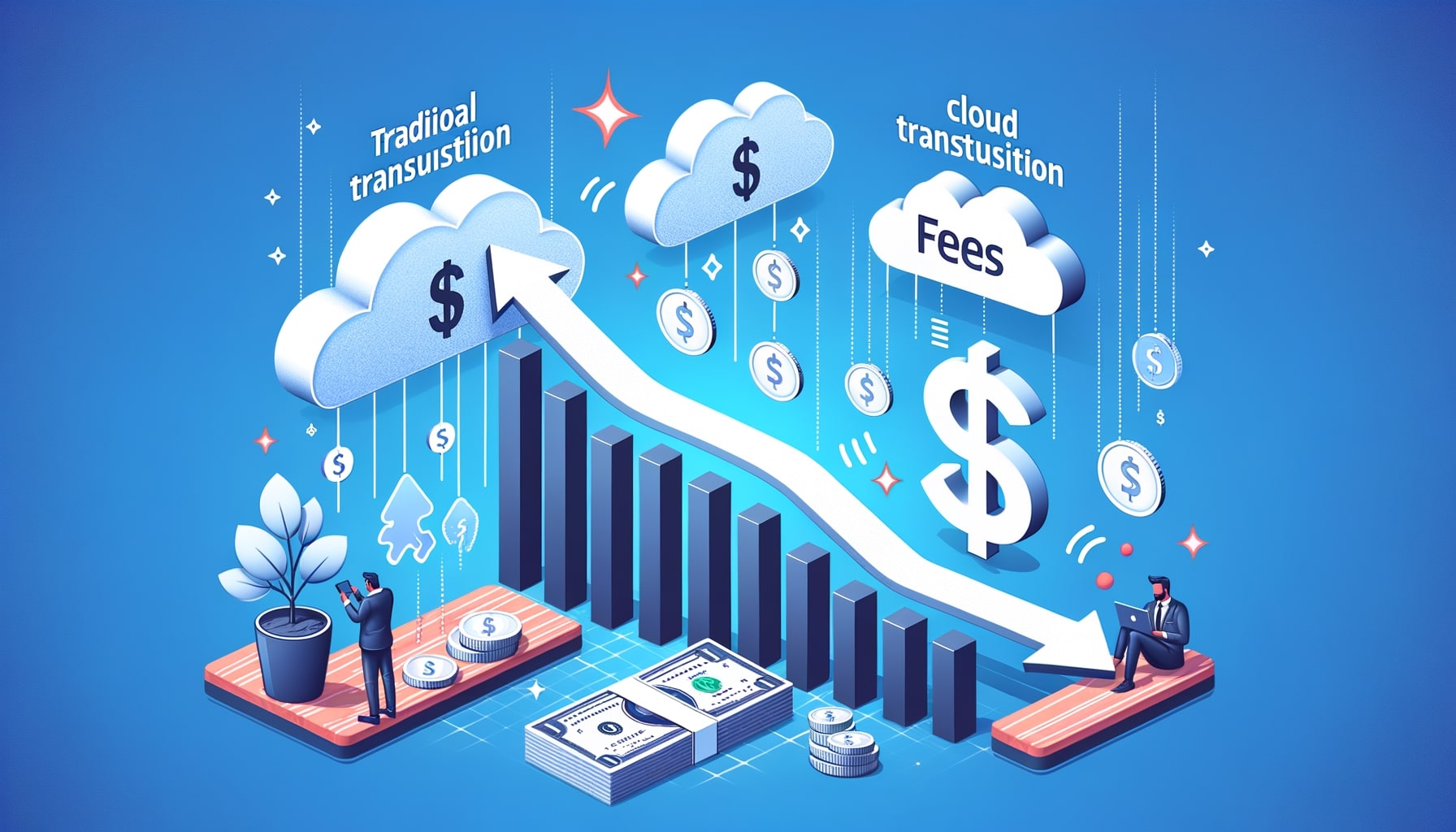How to Choose the Best Cloud Payment Platform for Your Needs
In today’s digital age, businesses are increasingly relying on cloud payment platforms to streamline their payment processes and enhance customer experiences. A cloud payment platform allows businesses to securely accept and process payments from various channels, such as online, mobile, and in-store. However, with numerous options available in the market, choosing the best cloud payment platform for your needs can be a daunting task.
This article aims to guide you through the process of selecting the right cloud payment platform by considering various factors, including security and compliance features, integration capabilities, scalability and flexibility, pricing models, user experience, and advanced features.
Factors to Consider When Choosing a Cloud Payment Platform
1. Security and Compliance Features
Security should be a top priority when selecting a cloud payment platform. Look for platforms that offer robust encryption methods, tokenization, and secure data storage to protect sensitive customer information. Additionally, ensure that the platform complies with industry standards and regulations, such as the Payment Card Industry Data Security Standard (PCI DSS), to avoid potential legal and financial risks.
2. Integration Capabilities
Consider the integration capabilities of the cloud payment platform with your existing systems and software. Look for platforms that offer seamless integration with popular e-commerce platforms, point-of-sale (POS) systems, accounting software, and customer relationship management (CRM) systems. This will enable you to streamline your operations and avoid manual data entry.
3. Scalability and Flexibility
Choose a cloud payment platform that can scale with your business growth. Consider the platform’s ability to handle increasing transaction volumes, support multiple currencies, and accommodate future expansion plans. Additionally, flexibility in terms of payment methods, such as credit cards, digital wallets, and alternative payment options, is crucial to cater to diverse customer preferences.
4. Pricing Models and Cost Structures
Evaluate the pricing models and cost structures of different cloud payment platforms. Some platforms charge a flat fee per transaction, while others have tiered pricing based on transaction volumes. Consider your business’s transaction volume and average ticket size to determine the most cost-effective option. Additionally, be aware of any hidden fees, such as setup fees, monthly fees, or additional charges for specific features.
5. User Experience and Interface Design
A user-friendly interface and seamless user experience are essential for both your customers and your staff. Look for a cloud payment platform that offers intuitive navigation, easy-to-use features, and customizable branding options. A well-designed platform will enhance customer satisfaction, reduce training time for your staff, and minimize errors during the payment process.
6. Advanced Features and Functionality
Consider the advanced features and functionality offered by different cloud payment platforms. Some platforms provide additional tools, such as recurring billing, subscription management, invoicing, and analytics, which can streamline your business operations and provide valuable insights. Assess your specific business needs and prioritize platforms that offer the features that align with your requirements.
Assessing Security and Compliance Features in a Cloud Payment Platform
Security is of utmost importance when it comes to handling sensitive customer payment information. When assessing the security and compliance features of a cloud payment platform, consider the following factors:
1. Encryption Methods
Ensure that the platform uses strong encryption methods, such as SSL/TLS, to protect data during transmission. Encryption ensures that sensitive information, such as credit card numbers, is securely transmitted and cannot be intercepted by unauthorized parties.
2. Tokenization
Tokenization is a process that replaces sensitive data, such as credit card numbers, with unique tokens. These tokens are meaningless to hackers and can be safely stored in the cloud payment platform’s database. Tokenization adds an extra layer of security by reducing the risk of data breaches.
3. Secure Data Storage
Check if the cloud payment platform securely stores customer payment information. Look for platforms that comply with industry standards, such as PCI DSS, which provide guidelines for securely storing, processing, and transmitting cardholder data. Compliance with these standards ensures that the platform follows best practices to protect customer data.
4. Fraud Detection and Prevention
Consider the fraud detection and prevention measures implemented by the cloud payment platform. Look for platforms that offer real-time fraud monitoring, address verification services (AVS), and card verification value (CVV) checks. These features help identify and prevent fraudulent transactions, protecting both your business and your customers.
5. Compliance with Regulations
Ensure that the cloud payment platform complies with relevant regulations, such as PCI DSS. Compliance with these regulations is crucial to avoid potential legal and financial penalties. Additionally, consider platforms that are certified by reputable third-party organizations, such as the Payment Card Industry Security Standards Council (PCI SSC), to ensure their commitment to security.
Evaluating Integration Capabilities of Cloud Payment Platforms
Integration capabilities play a vital role in streamlining your payment processes and avoiding manual data entry. When evaluating the integration capabilities of a cloud payment platform, consider the following factors:
1. E-commerce Platforms
If you have an online store, ensure that the cloud payment platform seamlessly integrates with popular e-commerce platforms, such as Shopify, WooCommerce, or Magento. Integration with these platforms allows for a smooth checkout process and automatic synchronization of order and payment data.
2. Point-of-Sale (POS) Systems
If you have a physical store, consider the compatibility of the cloud payment platform with your existing POS system. Look for platforms that offer integration with leading POS systems, such as Square, Lightspeed, or Vend. Integration with your POS system enables you to accept payments in-store and synchronize sales data across different channels.
3. Accounting Software
Consider the integration capabilities of the cloud payment platform with your accounting software. Integration with accounting software, such as QuickBooks or Xero, allows for automatic synchronization of payment data, simplifying your bookkeeping processes and reducing manual errors.
4. Customer Relationship Management (CRM) Systems
If you use a CRM system to manage customer data and relationships, ensure that the cloud payment platform integrates with your CRM system. Integration with CRM systems, such as Salesforce or HubSpot, enables you to track customer payment history, personalize customer experiences, and generate valuable insights.
5. Application Programming Interfaces (APIs)
Check if the cloud payment platform provides robust APIs that allow for custom integrations with your existing systems and software. APIs enable developers to build custom solutions and automate workflows, providing flexibility and scalability for your business.
Understanding the Scalability and Flexibility of Cloud Payment Platforms
Scalability and flexibility are crucial factors to consider when choosing a cloud payment platform. As your business grows, you need a platform that can handle increasing transaction volumes, support multiple currencies, and accommodate future expansion plans. Consider the following aspects when assessing the scalability and flexibility of a cloud payment platform:
1. Transaction Volume
Evaluate the platform’s ability to handle your current transaction volume and its scalability to accommodate future growth. Look for platforms that can process a high volume of transactions without compromising performance or experiencing downtime. Scalable platforms ensure that your payment processes remain smooth even during peak periods.
2. Multiple Currencies
If you operate in multiple countries or cater to international customers, ensure that the cloud payment platform supports multiple currencies. Look for platforms that offer built-in currency conversion or integration with third-party currency conversion services. This allows you to accept payments in different currencies and provide a seamless experience to your global customers.
3. Expansion Plans
Consider your future expansion plans and assess if the cloud payment platform can support your growth. Look for platforms that offer multi-store or multi-location capabilities, allowing you to manage payments across different branches or online stores from a centralized platform. This ensures consistency in payment processes and provides a unified view of your business.
4. Payment Methods
Flexibility in accepting various payment methods is essential to cater to diverse customer preferences. Look for cloud payment platforms that support a wide range of payment methods, including credit cards, debit cards, digital wallets (such as Apple Pay or Google Pay), and alternative payment options (such as PayPal or Klarna). This allows you to offer a seamless checkout experience and increase customer satisfaction.
5. Mobile Payments
Consider the platform’s support for mobile payments, as mobile commerce continues to grow rapidly. Look for platforms that offer mobile payment solutions, such as in-app payments or mobile point-of-sale (mPOS) capabilities. Mobile payment options enable you to accept payments on the go and provide a convenient experience for your customers.
Comparing Pricing Models and Cost Structures of Cloud Payment Platforms
Pricing is a crucial factor when choosing a cloud payment platform, as it directly impacts your business’s profitability. Evaluate the pricing models and cost structures of different platforms to determine the most cost-effective option for your business. Consider the following aspects when comparing pricing:
1. Transaction Fees
Transaction fees are a common pricing model for cloud payment platforms. Some platforms charge a flat fee per transaction, while others have tiered pricing based on transaction volumes. Assess your business’s transaction volume and average ticket size to determine the most cost-effective option. Additionally, be aware of any additional fees, such as international transaction fees or fees for specific payment methods.
2. Monthly Fees
Some cloud payment platforms charge a monthly fee in addition to transaction fees. Monthly fees may provide access to additional features or support services. Consider your business’s needs and budget to determine if the additional features justify the monthly fee. Additionally, be aware of any hidden fees, such as setup fees or fees for technical support.
3. Setup and Integration Fees
Check if the cloud payment platform charges any setup or integration fees. Some platforms may require additional setup or customization to integrate with your existing systems. Assess the setup and integration requirements of the platform and consider the associated costs.
4. Volume Discounts
If your business has a high transaction volume, consider platforms that offer volume discounts. Volume discounts can significantly reduce your transaction costs and improve your profitability. Evaluate the volume thresholds and discount rates offered by different platforms to determine the potential savings.
5. Hidden Fees
Carefully review the pricing terms and conditions to identify any hidden fees. Some platforms may charge additional fees for specific features, such as recurring billing, subscription management, or advanced analytics. Be aware of these fees and assess if the additional features are necessary for your business.
Analyzing User Experience and Interface Design in Cloud Payment Platforms
User experience and interface design are crucial factors that impact both your customers and your staff. A well-designed cloud payment platform enhances customer satisfaction, reduces training time for your staff, and minimizes errors during the payment process. Consider the following aspects when analyzing user experience and interface design:
1. Intuitive Navigation
Look for a cloud payment platform that offers intuitive navigation and easy-to-use features. The platform should have a clear and logical flow, guiding users through the payment process without confusion. Avoid platforms with complex or cluttered interfaces that may lead to user frustration and abandoned transactions.
2. Customizable Branding
Consider platforms that allow you to customize the branding elements, such as logos, colors, and fonts, to maintain a consistent brand identity. Customizable branding creates a seamless experience for your customers and reinforces your brand image throughout the payment process.
3. Responsive Design
Ensure that the cloud payment platform has a responsive design that adapts to different devices and screen sizes. Responsive design is essential for providing a consistent user experience across desktops, tablets, and mobile devices. A mobile-friendly platform is particularly important as mobile commerce continues to grow.
4. Error Handling
Evaluate how the platform handles errors during the payment process. Look for platforms that provide clear error messages and guidance to users when issues arise, such as declined transactions or incorrect payment information. Effective error handling reduces user frustration and increases the chances of successful transactions.
5. Training and Support
Consider the training and support options provided by the cloud payment platform. Look for platforms that offer comprehensive documentation, tutorials, and customer support channels, such as live chat or phone support. Adequate training and support ensure that your staff can effectively use the platform and resolve any issues promptly.
Exploring Advanced Features and Functionality in Cloud Payment Platforms
Advanced features and functionality can significantly enhance your payment processes and provide valuable insights for your business. Consider the following advanced features when exploring cloud payment platforms:
1. Recurring Billing
If your business offers subscription-based services or recurring payments, look for platforms that offer recurring billing functionality. Recurring billing automates the payment process for recurring customers, reducing manual effort and improving cash flow.
2. Subscription Management
If you have a subscription-based business model, consider platforms that provide comprehensive subscription management features. Look for platforms that offer flexible billing cycles, prorated charges, and the ability to manage upgrades, downgrades, and cancellations. Subscription management features streamline your operations and provide a seamless experience for your subscribers.
3. Invoicing
If your business frequently sends invoices to customers, consider platforms that offer integrated invoicing capabilities. Look for platforms that allow you to generate and send professional invoices directly from the payment platform. Integrated invoicing simplifies your billing processes and reduces the need for separate invoicing software.
4. Analytics and Reporting
Evaluate the analytics and reporting capabilities of the cloud payment platform. Look for platforms that provide detailed transaction reports, sales analytics, and customer insights. Analytics and reporting features enable you to track key metrics, identify trends, and make data-driven decisions to optimize your payment processes and improve business performance.
5. Fraud Prevention Tools
Consider platforms that offer advanced fraud prevention tools, such as machine learning algorithms or artificial intelligence. These tools analyze transaction patterns, detect anomalies, and identify potential fraudulent activities in real-time. Advanced fraud prevention tools protect your business from financial losses and maintain customer trust.
Frequently Asked Questions (FAQs) about Cloud Payment Platforms
Q.1: What is a cloud payment platform?
A cloud payment platform is a software solution that enables businesses to securely accept and process payments from various channels, such as online, mobile, and in-store. It provides features such as payment processing, security, integration with other systems, and advanced functionality to streamline payment processes.
Q.2: Why is security important in a cloud payment platform?
Security is crucial in a cloud payment platform to protect sensitive customer payment information from unauthorized access or data breaches. Robust encryption methods, tokenization, secure data storage, and compliance with industry standards, such as PCI DSS, ensure the security of customer data and reduce the risk of legal and financial penalties.
Q.3: How do cloud payment platforms integrate with other systems?
Cloud payment platforms integrate with other systems, such as e-commerce platforms, POS systems, accounting software, and CRM systems, through APIs. APIs allow for seamless data exchange and synchronization between different systems, eliminating the need for manual data entry and streamlining business operations.
Q.4: What are the different pricing models for cloud payment platforms?
Cloud payment platforms offer various pricing models such as transaction-based fees, monthly subscriptions, or a combination of both. Assess your business needs and projected transaction volumes to determine the most cost-effective pricing model.
Q.5: How do I evaluate the performance and scalability of a cloud payment platform?
Evaluate the performance of a cloud payment platform by reviewing benchmarks or conducting performance tests. Look for platforms that offer fast and efficient transaction processing. Assess the platform’s scalability options such as auto-scaling or load balancing to handle increased transaction volumes without performance degradation.
Conclusion
Choosing the best cloud payment platform for your business is a critical decision that can significantly impact your payment processes and customer experiences. By considering factors such as security and compliance features, integration capabilities, pricing models, performance and scalability, customer support, and user experience, you can make an informed decision that aligns with your business needs and goals.
Remember to prioritize security and compliance to protect sensitive payment information and maintain the trust of your customers. Evaluate the integration capabilities to ensure seamless data flow between your existing systems and the cloud payment platform. Consider the pricing models and cost structures to determine the most cost-effective solution for your business. Analyze the performance and scalability to ensure smooth payment processing even during peak loads. Examine the customer support options and service level agreements to ensure prompt and efficient support. Lastly, prioritize user experience to enhance the overall payment experience for your staff and customers.
By following this comprehensive guide and considering the various factors discussed, you can choose the best cloud payment platform that meets your specific needs and sets your business up for success in the digital payment landscape.










